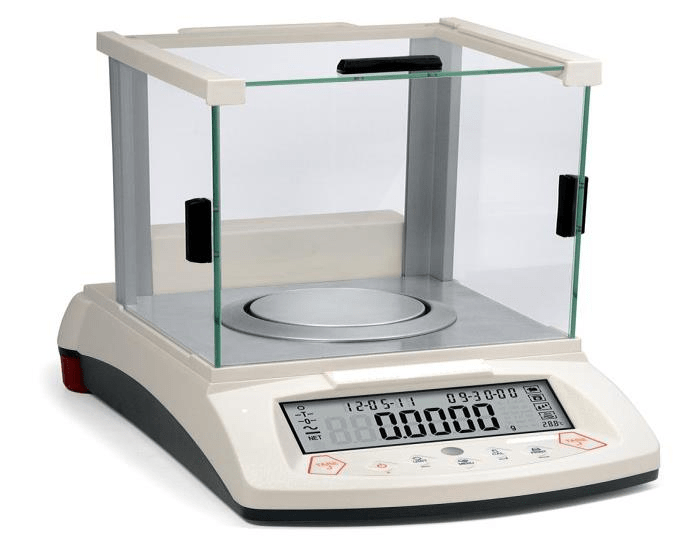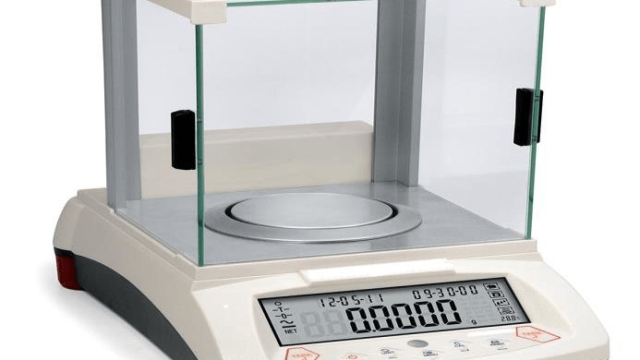 In the world of laboratory work, where precision is paramount, high-precision analytical balances can be explored further at https://gbsnap.com/, ensuring that accurate measurements are maintained in research and quality control applications.
In the world of laboratory work, where precision is paramount, high-precision analytical balances can be explored further at https://gbsnap.com/, ensuring that accurate measurements are maintained in research and quality control applications.
In the world of laboratory work, precision is paramount, and high-precision analytical balances play a crucial role in ensuring accurate measurements. Whether you are engaged in research, quality control, or any scientific application where weight measurement is vital, the reliability of your analytical balance can significantly influence the outcomes of your experiments. As laboratories strive to achieve the highest levels of accuracy, understanding the key features of these instruments becomes essential for making an informed purchase.
When looking for high-precision analytical balances, it is important to consider several critical features that can enhance both functionality and performance. From advanced weighing technologies to user-friendly interfaces, the right balance can streamline your processes and improve overall efficiency. Companies like W&J Instrument, a professional manufacturer and supplier of various electronic balances, moisture analyzers, and laboratory instruments, provide innovative solutions designed to meet the diverse needs of today’s laboratories. By focusing on these key features, you can equip your lab with a balance that not only meets but exceeds your precision requirements.
Understanding High-Precision Balances
High-precision analytical balances are essential tools in various laboratory settings, ensuring accurate measurements of mass for a wide range of applications. These instruments are designed to provide reliable data, which is crucial for research, quality control, and product development. With their ability to measure small weights with high resolution, analytical balances play a vital role in producing consistent and reproducible results.
The construction of high-precision balances involves advanced technology, including electromagnetic force restoration systems that minimize errors caused by environmental factors like vibrations, drafts, and temperature variations. Many models come equipped with additional features such as draft shields, multiple weighing modes, and calibration functions, which enhance their usability in different laboratory conditions. As a result, these balances are not only precise but also user-friendly.
When selecting a high-precision analytical balance, it is important to consider factors such as capacity, readability, and connectivity. Balances typically range in maximum capacity from a few grams to several kilograms, while readability can vary from 0.01 mg to 0.1 g or more. The integration of connectivity options like USB and Bluetooth facilitates data transfer and helps streamline workflows, making high-precision balances an indispensable part of any modern laboratory equipped by manufacturers like W&J Instrument.
Key Features of Analytical Balances
High-precision analytical balances are essential tools in laboratories where accurate measurements are vital. One of the key features to consider is the readability of the balance. A balance with a readability of 0.1 mg or better can provide the precision required for most analytical applications. This level of precision ensures that even small variations in sample weight can be detected, which is crucial for experiments requiring high accuracy.
Another important feature is the internal calibration system. A balance that includes automatic internal calibration can maintain its accuracy over time, compensating for temperature fluctuations or changes in environmental conditions. This feature enhances the reliability of measurements and reduces the need for manual calibration, saving time and ensuring consistency in results.
Additionally, the stability and weighing capacity of the balance are critical. High-quality analytical balances should offer a stable weighing platform to minimize vibrations and disturbances during the measurement process. It is also important to look for a balance with an adequate weighing capacity that can accommodate a variety of samples, providing versatility for different types of laboratory work. Together, these features contribute to the overall performance and reliability of high-precision analytical balances.
Importance of Calibration and Maintenance
Regular calibration is vital for ensuring the accuracy and reliability of high-precision analytical balances. Over time, factors such as temperature fluctuations, vibrations, and the weight of materials can affect the balance’s performance. Calibration against certified weights helps to confirm that the balance provides precise measurements that meet the required standards for laboratory work. Without proper calibration, users risk obtaining misleading data, which can lead to erroneous conclusions in experiments.
Maintenance is equally important in prolonging the lifespan of analytical balances. Dust, residues, and spills can interfere with the balance’s components, leading to inaccurate readings and potential damage. Routine cleaning and inspections are necessary to ensure that the balance remains in optimal condition. Developing a comprehensive maintenance schedule can help identify and address issues before they result in costly repairs or replacements.
In a laboratory setting, the precision and accuracy of measurements are paramount. For this reason, investing time and resources into the calibration and maintenance of analytical balances is essential. By doing so, facilities can enhance their operational efficiency and produce reliable results, which is crucial for research, quality control, and compliance with regulatory standards.
W&J Instrument’s Product Range
W&J Instrument is a leading manufacturer and supplier specializing in high-precision analytical balances and a diverse range of laboratory instruments. Their product offerings cater to various industries, ensuring that professionals have access to reliable and accurate measurement tools. Among their high-precision analytical balances, customers can find models that accommodate different weighing capacities and resolutions, making them suitable for a wide array of applications.
In addition to analytical balances, W&J Instrument also produces moisture analyzers and viscometers, providing a comprehensive suite of instruments for laboratories. Their moisture analyzers are designed to deliver fast and accurate moisture content determinations, while their viscometers are perfect for measuring the viscosity of liquids, ensuring that researchers have the tools needed for thorough analysis. This extensive product range reflects W&J Instrument’s commitment to quality and innovation.
Moreover, W&J Instrument focuses on customer satisfaction by providing excellent support and service for their products. From initial selection to installation and ongoing maintenance, their team ensures that clients receive the support they need to maximize the performance of their laboratory equipment. This dedication to quality and service sets W&J Instrument apart as a trusted partner in the scientific community.
